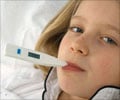Researchers at Yale University School of Medicine have discovered that a drug already used to control a type of epileptic seizure can also prevent future seizures in rats.
Epilepsy is a common chronic neurological disorder that is characterized by recurrent unprovoked seizures. These seizures are transient signs and/or symptoms due to abnormal, excessive or synchronous neuronal activity in the brain.In the study, the researchers examined rats that had been genetically engineered to develop absence seizures and an anticonvulsant drug already approved to treat this condition, called ethosuximide.
They gave one group of rats ethosuximide from the age of 21 days, before any epileptic symptoms had started, until the rats were 8 months old; a second group received the drug until the rats were only five months old; and a third control group received unmedicated water.
Then, the scientists monitored the electrical discharges in the brain that accompany absence seizures using electroencephalograms, and looked for protein products of genes associated with the condition.
After eight months, the study found rats that were still being given ethosuximide unsurprisingly had about one-third fewer discharges than did the rats fed unmedicated water. They also had fewer proteins associated with the genes responsible for the disease.
But the group given ethosuximide until only five months old showed the same effect, and to about the same extent.
Advertisement
“We were very surprised to find that the drug suppressed seizures even after treatment was stopped,” Nature quoted Hal Blumenfeld, lead author of the study.
Advertisement
The study is published in Epilepsia 1.
Source-ANI
SRM/L











